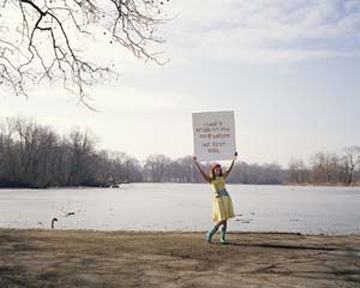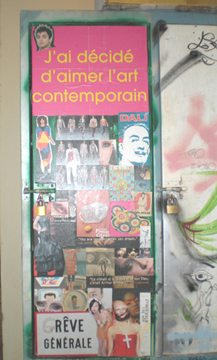Days have passed since St. Valentine’s Day and the flowers are giving off a sweet waft of imminent mortality, which may make them a dubious token of love. But I am a fan of flowers and even Valentine’s Day (in principle more than practice) and can’t get through one without coming back to Ryan Trecartin’s video work, Valentine’s Day Girl, which features a young woman so obsessed with love symbols that Christmas carols hasten her demise.
Love doesn’t make frequent appearances in contemporary art in any serious way aside from the occasional Robert Indiana icon—which I would like to think of as less saccharine as its reception (though it has become a backdrop for a giant make-out session for the Philadelphia tourism industry). Trecartin’s video hasn’t anything to do with love and everything to do with obsession, hysteria, and other psychic excesses.
Kalup Linzy has created a cast of mostly-in-drag-characters, the melancholic Taiwan being paramount, who sing and act out their love lives with Fassbinder-esque theatrics and solipsism. Parodying a range of screen-based traditions—from early cinema to music videos—Linzy’s characters work out their anxieties about their careers and love lives with no sense of resolution, though partying is often a sufficient antidote.
[youtube:https://www.youtube.com/watch?v=SEuGJ7OCX0c&feature=player_embedded]
If the work of Trecartin and Linzy are any indication, then the representation of things outside of reason, such as emotions, tend to find their representation outside of rationality as well. Never mind the much-anticipated return of affect to contemporary art—love is as crazy does.
But let’s allow that art can be a forum for things not easily spoken about or ways to speak, even to no one in particular or everyone at the same time. Brooklyn-based photographer Lauren Silberman has been recording communities or trying to create them through her projects and sometimes the photos become public postcards very much in the vein of Gillian Wearing’s confessional signs.

Lauren Silberman, "Valentine," 2009.
Such utterances need not be totally sentimental—even Wearing’s photography of the same period have depicted people in a mise-en-abime of x-rated narcissism, where the subjects are not holding statements but pictures of themselves…umm…loving themselves. And such lasciviousness brings us right back to the pagan roots of Valentine’s Day: a festival of lust and fertility.
There are some projects that are appropriately bawdy and bodily while maintaining a simultaneous sense of play and critique. Insert magazine made its appearance around Valentine’s 2007 as a sampler of both high and low-brow culture captured in a way that makes Barthes sound scandalous. Better yet, Insert plays on its form (a small zine that could exist inside a larger book or magazine) and is droplifted into other publications by its creators: Ryan Holmberg, Garrett Riccardi, Marco Roso, and Lan Tuazon. The zines are distributed by a generous act of civil disobedience while recuperating eroticism—its creator calls it “bookf**king”. If you’re lucky enough to come across one, share it with the ones you love.
The greatest thing I have learned about love and art is best expressed on this poster I saw in the art academy in Martinique:

"I have decided to love contemporary art"
This statement, “I have decided to love contemporary art,” says everything about making a conscious committing to those things that are difficult and challenging even when outside the realm of reason.




Pingback: le penne altrui : which is why I totally disagree